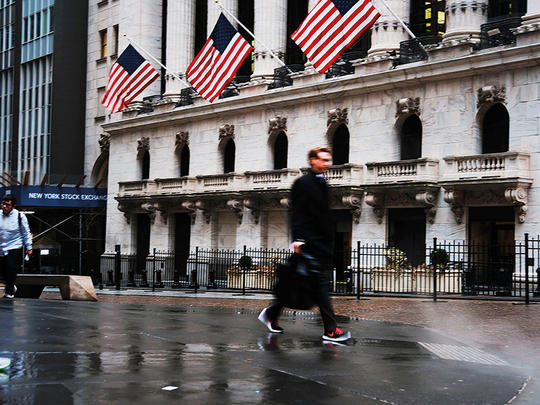
London: Investors fearful that a torrent of outflows from corporate bond ETFs presages a world of pain for the asset class, take solace: it’s just a drop in the ocean.
Research from Bank of America Corp suggests high-grade credit continues to swim in a pool of liquidity, with record redemptions from exchange-traded funds of late belying enduring appetite for company debt among retail and institutional money managers.
“For us to be concerned about large overall high-grade outflows “” ie from bond funds as well — we need to see a much bigger increase in interest rates,” strategists including Hans Mikkelsen and Yunyi Zhang wrote in a recent note to clients.
Investors in the world’s third-largest fixed-income ETF — the iShares iBoxx $ Investment Grade Corporate Bond exchange-traded fund (LQD) — withdrew $921 million last Wednesday, the largest daily outflow since its 2002 inception. That followed a record redemption the previous week.
The sell-off was relatively broad. Money managers pulled $14.1 billion from debt funds including ETFs, led by high yield, the fifth-largest stretch of redemptions in the week through February 14, according to EPFR data, spurred by fears over US interest rates. The 10-year benchmark traded at 2.9 per cent Tuesday amid fears it could test 3 per cent.
Step back, however, and a more bullish picture emerges. Even with the boom in passive investing, ETFs hold just 2.9 per cent of the outstanding stock of high-grade corporate bonds, with LQD representing just 0.5 per cent. What’s more, dedicated corporate bond funds and ETFs have posted $1 billion of inflows so far this year, according to BofA data.
JPMorgan Chase & Co is also sanguine, suggesting investors shouldn’t be overly concerned by the plumes of negative sentiment emanating from ETFs.
“Given record high outflows from US. HY bond ETFs, very high short interest ratios and rising costs of funding shorts, bearish sentiment in both US high yield and high-grade bonds appears stretched and looks vulnerable to a reversal,” strategists led by Nikolaos Panigirtzoglou wrote in a recent note.
That’s not to say the clout of passive vehicles should be overlooked.
Their holdings as a proportion of traditional high-grade and ETF funds combined stands at a non-trivial 11 per cent, according to Bank of America. And as high-beta credit products, which move with the global tide of risk appetite, they can provide useful, forward-looking signals on underlying appetite for corporate obligations.
“Fixed-income ETFs are getting increasingly popular and, as a result, are adding liquidity to the mostly illiquid corporate bond market,” the strategists concluded.
Factbox: Cracks appear in credit funds
Global bond funds saw the fifth-largest week of redemptions ever last week, amid expectations of higher interest rates, according to Bank of America Merrill Lynch, citing EPFR Global fund flow data.
Overall, $14.1 billion (Dh51.7 billion) was pulled from debt funds, with $10.9 billion taken from high-yield bonds alone, the second highest outflow on record. Investment-grade bond funds weren’t spared, with $2 billion of redemptions ending a 59-week streak of inflows, the bank said in a report covering the week to February 14.
A separate report from Lipper also showed an exodus from riskier debt. Investors yanked $6.3 billion from US high-yield junk bond funds in the past week, it said, the fifth straight week of outflows, bringing the total over that period to more than $15 billion.
“The narrative is really becoming more about inflation and rate risk creeping into the broad markets,” said Henry Peabody, a money manager at Eaton Vance Corp., with more than $400 billion of assets. “It’s hard to think of elevated volatility in both rates and equity not eventually seeping into credit.”
The 10-year US Treasury yield has continued to climb this month and jumped to a four-year high Thursday after consumer price data rose more than forecast. Simultaneous outflows from investment-grade, high-yield and emerging-market bonds occurred for the first time since the US presidential election in November 2016, according to Bank of America.
Despite a rebound the S&P 500 Index, US equity funds continued to see outflows, BofAML said. Investors took $7.2 billion from American stocks, although both European and Japanese shares enjoyed inflows. Large-cap stocks suffered the brunt of the withdrawals.
Still, not all bond funds experienced redemptions. Funds tracking Treasuries and government bonds took in $2.4 billion of new money, according to the note.






